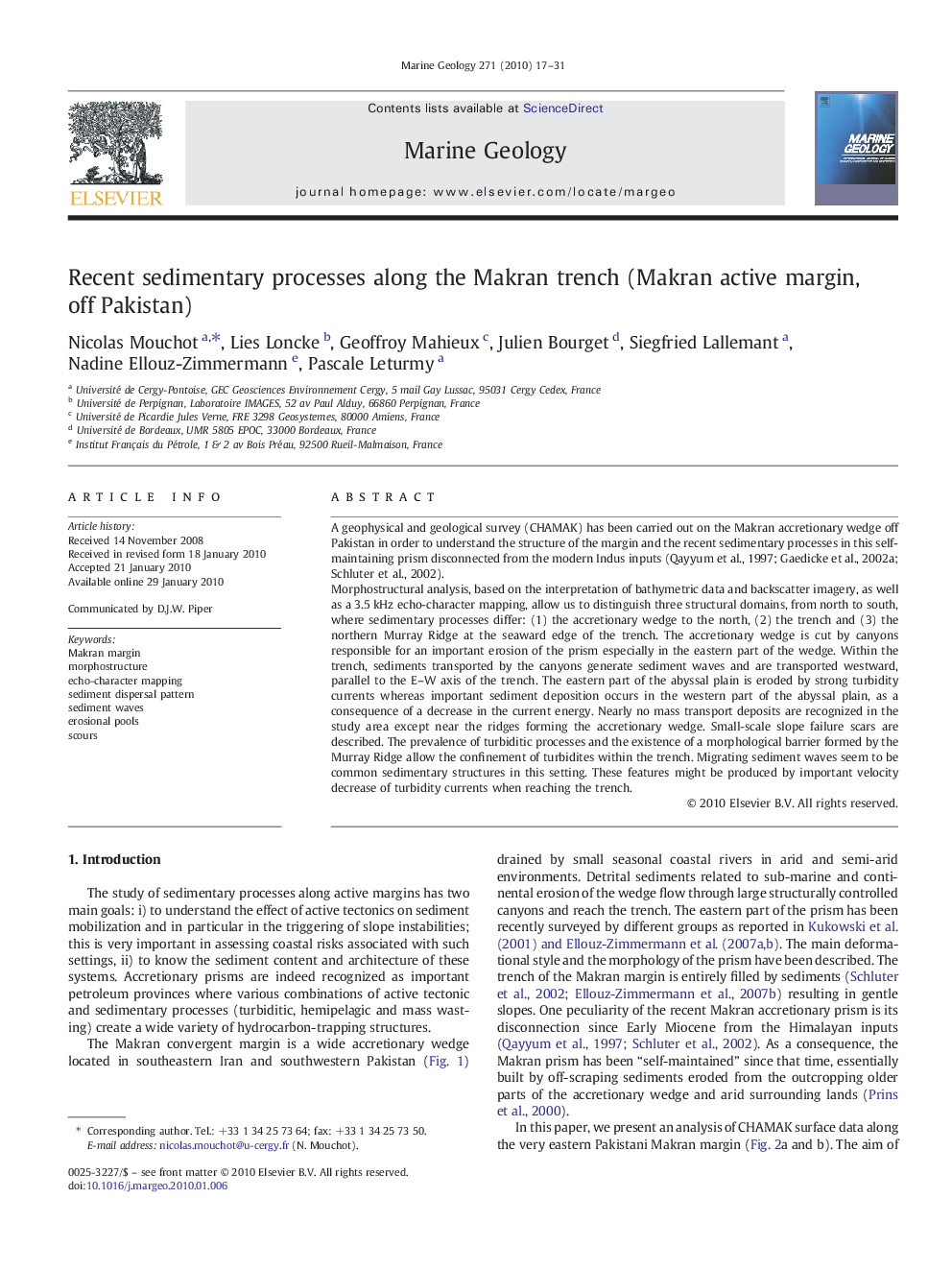| Article ID | Journal | Published Year | Pages | File Type |
|---|---|---|---|---|
| 4718893 | Marine Geology | 2010 | 15 Pages |
Abstract
Morphostructural analysis, based on the interpretation of bathymetric data and backscatter imagery, as well as a 3.5Â kHz echo-character mapping, allow us to distinguish three structural domains, from north to south, where sedimentary processes differ: (1) the accretionary wedge to the north, (2) the trench and (3) the northern Murray Ridge at the seaward edge of the trench. The accretionary wedge is cut by canyons responsible for an important erosion of the prism especially in the eastern part of the wedge. Within the trench, sediments transported by the canyons generate sediment waves and are transported westward, parallel to the E-W axis of the trench. The eastern part of the abyssal plain is eroded by strong turbidity currents whereas important sediment deposition occurs in the western part of the abyssal plain, as a consequence of a decrease in the current energy. Nearly no mass transport deposits are recognized in the study area except near the ridges forming the accretionary wedge. Small-scale slope failure scars are described. The prevalence of turbiditic processes and the existence of a morphological barrier formed by the Murray Ridge allow the confinement of turbidites within the trench. Migrating sediment waves seem to be common sedimentary structures in this setting. These features might be produced by important velocity decrease of turbidity currents when reaching the trench.
Keywords
Related Topics
Physical Sciences and Engineering
Earth and Planetary Sciences
Geochemistry and Petrology
Authors
Nicolas Mouchot, Lies Loncke, Geoffroy Mahieux, Julien Bourget, Siegfried Lallemant, Nadine Ellouz-Zimmermann, Pascale Leturmy,
